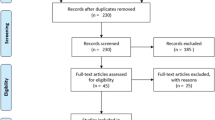Abstract
This study examined the effects of adult antecedent utterances on the occurrence and use of echolalia in children with autism during a free play setting. Adult antecedent utterances were differentiated into two types, high and low constraint, based on the degree of linguistic constraint inherent in the adult utterance and social-communicative control exerted on the child's social and verbal interaction. Results of this study identified a variety of patterns of echolalia usage following adult high and low constraint utterances. Overall results found that a majority of immediate echoes followed high constraint utterances and were primarily used as responsives, organizational devices, and cognitives. The majority of delayed echoes followed low constraint utterances and were primarily used as requestives, assertives, and cognitives. Delayed echoes were more likely than immediate echoes to be produced with evidence of comprehension, but there were no differences in comprehension within the two categories of echolalia following high and low constraint utterances. Educational implications are discussed.
Similar content being viewed by others
References
Cantwell, D., Baker, L., & Rutter, M. (1978). A comparative study of infantile autism and specific developmental receptive languate disorder, IV: Analysis of syntax and function.Journal of Child Psychology and Psychiatry, 19, 351–363.
Charlop, M. (1983). The effects of echolalia on acquisition and generalization of receptive labeling in autistic children.Journal of Applied Behavior Analysis, 16, 111–126.
Carrow-Woolfolk, E. (1985).Test of Auditory Comprehension of Language (rev. ed.). Allen, TX:DLM Teaching Resources.
Duchan, J. F. (1983). Autistic children are non-interactive: Or so we say.Seminars in Speech, Language and Hearing, 4, 53–61.
Dore, J. (1986). The development of conversational competence. In R. Schiefelbusch (Ed.),Language competence: Assessment and intervention. San Diego: College-Hill.
Fay, W., & Schuler, A. (1980).Emerging language in autistic children. Baltimore: University Park Press.
Hermelin, B., & O'Connor, N. (1970).Psychological experiments with autistic children. London: Pergamon.
Howlin, P. (1981). The effectiveness of operant language training with autistic children.Journal of Autism and Developmental Disorders.11, 89–106.
Hubbell, R. D. (1977). On facilitating spontaneous talking in young children.Journal of Speech and Hearing Disorders, 42, 216–231.
McDonald, L., & Pien, D. (1982). Mother conversational behavior as a function of interactional intent.Journal of Child Language, 9, 337–358.
McEvoy, R., Loveland, K., & Landry, S. (1988). The functions of immediate echolalia in autistic children: A developmental perspective.Journal of Autism and Developmental Disorders 18, 657–668.
Miller, J. F., & Chapman, R. S. (1981). The relation between age and mean length of utterance in morphemes.Journal of Speech and Hearing Research, 24, 154–161.
Miller, J. F. & Chapman, R. S. (1983).Systematic analysis of language transcripts (Apple version). Madison: University of Wisocosin-Madison. Mishler, E. G. (1979). Meaning in context: Is there any other kind?Harvard Educational Review, 49, 1–19.
Prizant, B. M. (1983). Language and communication in autism: Toward an understanding of the “whole” of it.Journal of Speech and Hearing Disorders, 48, 296–307.
Prizant, B. M., & Duchan, J. F. (1981). The functions of immediate echolalia in autistic children.Journal of Speech and Hearing Disorders, 46, 241–249.
Prizant, B. M., & Rydell, P. J. (1984). An analysis of the functions of delayed echolalia in autistic children.Journal of Speech and Hearing Research, 27, 183–192.
Prizant, B. M. & Rydell, P. J. (1993). Assessment and intervention considerations for unconventional verbal behavior. In J. Reichle & D. Wacker (Eds.),Communicative alternatives to challenging behavior (pp. 263–297). Baltimore: Paul H. Brookes.
Rimland, B. (1964).Diagnostic Check List for Behavior-Disturbed Children: Form E-2. San Diego, CA:
Roberts, J. (1989). Echolalia and Comprehension in Autistic children.journal of Autism and Developmental Disorders, 19, 271–281.
Rydell, P. J. (1989).Social-communicative control and its effect on echolalia in children with autism. Unpublished doctoral dissertation, University of Nebraska-Lincoln.
Rydell, P. J., & Mirenda, P. (1991). The effects of two levels of linguistic constraint on echolalia and generative language production in children with autism.Journal of Autism and Developmental Disorders, 21, 1991.
Schreibman, L., & Carr, E. (1978). Elimination of echolalic responding to questions through the training of a generalized verbal response.Journal of Applied Behavior Analyss, 11, 453–464.
Schuler, A. L. (1979). Echolalia: Issues and clinical applications.Journal of Speech and Hearing Disorders, 44, 411–434.
Schuler, A. L., & Prizant, B. M. (1985). Echolalia. In E. Schopler & G. Mesibov (Eds.),Communication problems in autism. New York: Plenum Press.
Seibert, J., & Oller, D. (1981). Linguistic pragmatics and language intervention strategies.Journal of Autism and Developmental Disorders, 11, 75–88.
Shatz, B. (1977). The relationship between cognitive processes and the development of communication skills. In B. Keasey (Ed.),Nebraska Symposium on Motivation (pp. 1–42). Lincoln: University of Nebraska Press.
Sparrow, S., Balla, D., & Cicchetti, D. (1984).Vineland Adaptive Behavior Scales (Interview ed.). Circle Pines, MN: American Guidance Service.
Author information
Authors and Affiliations
Rights and permissions
About this article
Cite this article
Rydell, P.J., Mirenda, P. Effects of high and low constraint utterances on the production of immediate and delayed echolalia in young children with autism. J Autism Dev Disord 24, 719–735 (1994). https://doi.org/10.1007/BF02172282
Issue Date:
DOI: https://doi.org/10.1007/BF02172282




